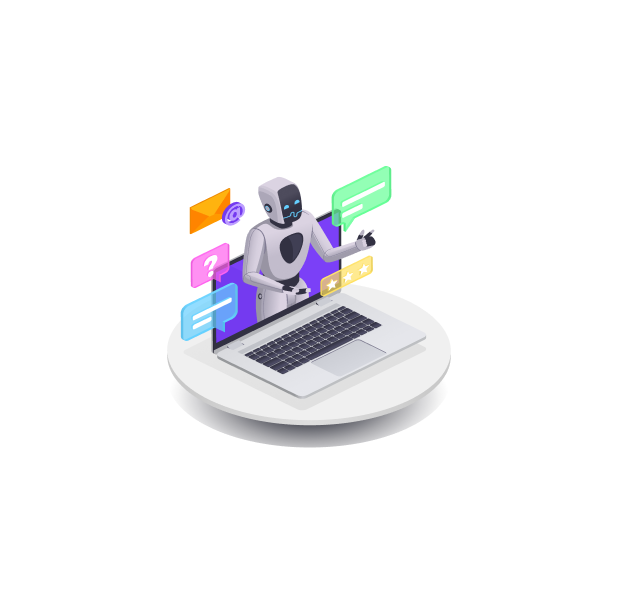Software development and Web3 are two sides of the same coin, which play an essential role in creating successful digital products. Software development provides the technical skills necessary to build applications while Web3 allows users to interact with them. By combining these two technologies, developers can create powerful and secure digital solutions beyond what traditional web development can offer! But why do they go hand in hand and what are some popular uses of these technologies today? Continue reading to learn more.
What is the difference between Web3 and Software Development?
Software development is the foundation for creating digital products, such as apps and websites. It involves writing code in a programming language to create software applications from scratch. These technologies are designed to make it easier for users to interact with computers and perform various tasks in an automated manner.
Web3 on the other hand, is a decentralized platform that connects users to applications securely and trustlessly. It uses blockchain technology to store data, execute transactions, and facilitate peer-to-peer interactions on a global scale.
What is the relationship between Web3 and Software Development?
Web3 and software development have a symbiotic relationship. Software development is responsible for creating the application or product that Web3 allows users to interact with, providing an enhanced user experience through its decentralized platform. By combining these two technologies, developers can create innovative products and services that are more efficient, secure, and reliable than ever before.
Additionally, Web3 allows for easier integration of different components into a single application. This lets developers easily develop cross-platform solutions without worrying about platform compatibility issues! As such, the software development and Web3 combination provides developers with the tools and resources necessary to create innovative digital products for their users.
Here’s an article on Exploring the Impact of Blockchain in Fintech, which discusses how blockchain is contributing to the change in the finance industry.
What are some use cases of Web3 and Software Development?
Web3 and software development are used in a wide range of use cases. From web-based applications to decentralized finance (DeFi) platforms, these two technologies have enabled developers to create innovative digital solutions for businesses and consumers alike. The following are the common use cases of these technologies today:
1. Decentralized Applications (DApps)
DApps are distributed applications that are built on top of blockchain technology. DApps differ from traditional apps because they are decentralized, meaning a single entity does not control them. By using Web3 and software development, developers can create robust and secure DApps that enable users to interact with the blockchain in a trustless manner. This decentralization ensures enhanced transparency, security, and user autonomy in the digital landscape.
2. Decentralized Finance (DeFi) Platforms
Decentralized Finance (DeFi) represents a burgeoning digital economy driven by blockchain innovation. Unlike traditional financial systems, DeFi offers users an expansive array of financial services, including lending, borrowing, trading, and more. The hallmark of DeFi platforms lies in their decentralization, granting users unprecedented access to these services without reliance on conventional financial intermediaries. This democratization of finance fosters inclusivity, transparency, and financial independence for a broader user base.
3. Enterprise Platforms
Enterprise platforms serve as integral tools for organizations, facilitating the development of tailored digital solutions for internal processes. Here, software development takes the forefront, empowering developers to create sophisticated applications that streamline and enhance various aspects of an enterprise’s operations. The integration of Web3 technology further elevates these platforms by providing a decentralized framework for user interaction. Through Web3, enterprises can ensure heightened security, transparency, and trust in their internal processes. It fosters efficient collaboration and innovation within the organization. This synergy between software development and Web3 opens new avenues for enterprises to build robust, decentralized solutions that adapt to the evolving digital landscape.
4. IoT Solutions
The Internet of Things (IoT) encompasses a vast network of interconnected devices designed for diverse tasks. Leveraging software development and Web3, developers can forge advanced and secure IoT solutions. In this context, software development plays a pivotal role in crafting the functionality of these interconnected devices, ensuring seamless communication and efficient task execution.
The incorporation of Web3 technology further enhances the security and reliability of IoT solutions. By storing data on the blockchain, developers can establish a tamper-resistant and transparent ledger. This not only fortifies the integrity of the data but also introduces trustless interactions among IoT devices. The decentralized nature of Web3 ensures that the IoT ecosystem operates with increased resilience, mitigating single points of failure and enhancing the overall security posture of connected devices. This intersection of software development and Web3 in the realm of IoT opens up possibilities for creating robust, transparent, and secure networks that redefine the capabilities of interconnected devices.
5. Artificial Intelligence Solutions
Artificial intelligence applications are capable of automating tasks and decisions to improve efficiency and accuracy. Many organizations are now adopting AI solutions to improve their processes. These solutions allow for secure collaboration between multiple users, automated decisions and data-driven insights. With Web3 and software development technologies, AI solutions have become even more powerful and secure.
6. Supply Chain Solutions
The supply chain is one of the most important aspects of any business. Web3 and software development technologies have enabled developers to create secure supply chain solutions that use blockchain technology to ensure traceability and visibility throughout the entire process. This ensures that goods are tracked accurately, reducing the chances of fraud or theft.
7. Cryptocurrency Exchanges
Cryptocurrency exchanges are becoming increasingly popular as more people are turning to cryptocurrencies as a form of payment. By leveraging Web3 and software development, developers have been able to create user-friendly cryptocurrency exchanges that allow users to securely buy, sell, and trade digital assets with ease.
8. Decentralized Autonomous Organizations (DAOs)
DAOs are digital entities that operate autonomously on the blockchain. Developers use software development to create the applications and Web3 to enable users to interact with them through a decentralized platform. Founding DAOs can be a complex endeavor from both the legal and technical sides, but it can be extremely rewarding if done correctly.
The Bottom Line
Web3 and software development revolutionize how businesses adopt decentralized technologies. They securely store, process, and transfer data across systems, enabling tailored applications for specific use cases. As demand and understanding grow, developers will innovate solutions, enhancing how people live, work, and play. Here’s an article about the Future of Finance and Technology: 10 Innovations of Fintech, check it out. If you want to consult about Web3 and Software Development for your business, be sure to check out our company’s portfolio.




[…] Here’s an article on Why Web3 and Software Development Go Hand in Hand. […]
Comments are closed.